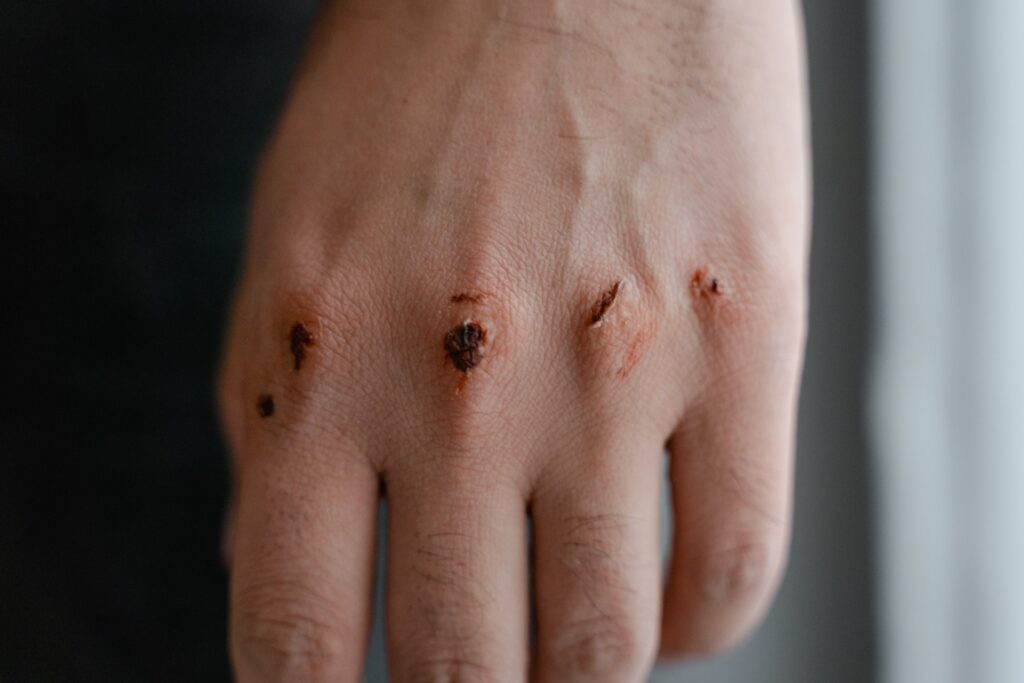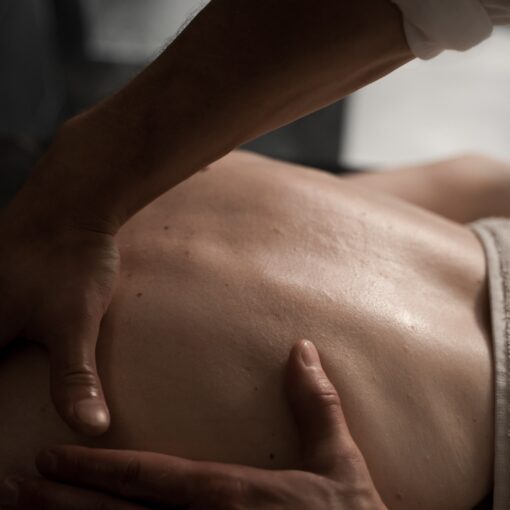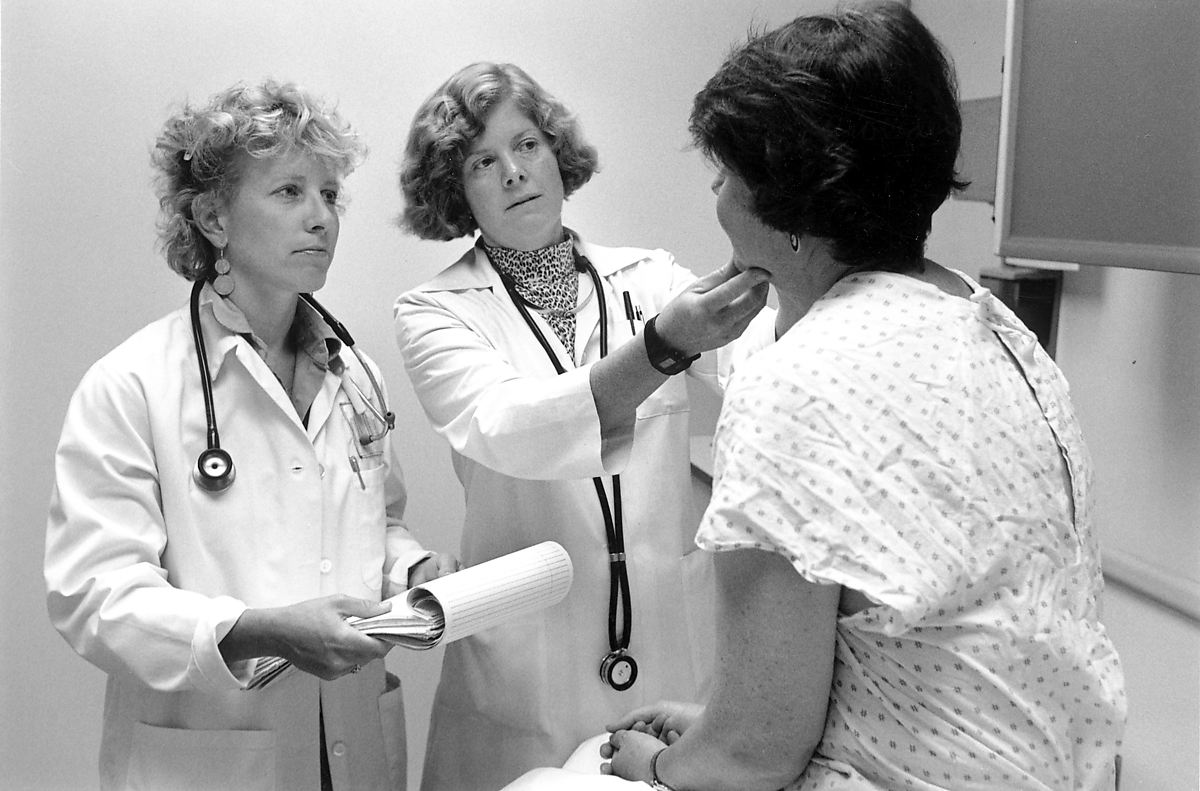So you’ve had surgery, broken a bone, or pulled, over-stretched, strained, sprained or torn a muscle. Whatever the case may be, from an injury point of view, the initial healing process is all the same.
Why you have Scar Tissue
Whether a muscle is damaged due to an accident, surgically cut, or injured during use, you would expect that the body would repair the injury site with new muscle. In micro tears caused by exercise, that is the response, building strength and mass. But larger tears and damage across large portions of the muscle are instead replaced by scar tissue.
Scar tissue is made from inflexible collagen fibrous material, not too dissimilar from tendons or ligaments. This material binds itself to the damaged soft tissue fibers in an effort to draw the damaged fibers back together, like a biological ‘bandaid’. What results is a bulky mass of fibrous scar tissue completely surrounding the injury site. In some cases it’s even possible to see and feel this bulky mass under the skin.
When scar tissue forms around an injury site, it is never as strong as the tissue it replaces, and since it isn’t muscle, it can’t contract and lengthen. It also has a tendency to pull and deform the surrounding tissues, so not only is the strength of the tissue diminished, but flexibility of the tissue is also compromised.
Scar tissue can adhere to muscle fibers, preventing them from sliding back and forth properly. It can adhere to connective tissues, limiting the flexibility of a muscle or joint. And it can adhere to nerve cells, leading to chronic pain and other conditions.
Research has proven scar tissue to be weaker, less elastic, more prone to future re-injury and as much as 1000 times more pain sensitive than normal, healthy tissue. Chronic pain is a common result, pain that could remain for years after the initial injury.
Since it is never broken down, untreated scar tissue is a major cause of re-injury, usually months after you thought that injury had fully healed.
Why your Doctor has no cure
The standard medical response to muscular injuries, surgeries and broken bones is still mostly pain killers, anti-inflammatory drugs, and rest. The medication does little more than numb the pain and suppress the inflammation. The symptoms are effectively reduced, but these are the symptoms of the injury—not the injury itself.
Drugs can actually slow the healing process, as pain killers allow the injury to be reinjured during normal activity since there is no pain to signal when additional damage may be occurring. Too much rest can be counterproductive as well, since muscle tissue needs a certain amount of movement as it heals, and will begin to atrophy (shrink) if not used.
If chronic pain and immobility remain for some time, many doctors will even suggest cortisone shots for pain and surgery to remove scar tissue, which will only make matters worse. Many people think that scar tissue will simply go away after time, but without adequate attention to the underlying problem, many people will go untreated or remain on pain medication much longer than necessary, often causing additional injuries.
The Importance of Post Injury massage
For an injured muscle to regain maximum strength and flexibility, the scar tissue needs to become aligned and integrated with the muscle fibers. Oddly, our bodies do not have an efficient internal mechanism for accomplishing this. It’s somewhat haphazard, gradually improving over time but often not resolving completely, which can become quite a problem. In effect, multiple re-injuries lay down “bandaids” over the same area again and again without removing the old one first.
The problem is that the nervous system essentially “over reacts” to even small areas of scar tissue, usually by keeping the muscle in a shortened, inflamed, and usually painful state. The inflammation process is the first stage of healing and by keeping the muscle short, the nervous system is trying to protect it from further harm. These reactions however, can continue well past the point of being productive—in fact they can continue indefinitely.
By correcting (aligning and smoothing out) areas of scar tissue and other muscular irregularities, Soft Tissue Release breaks the muscular pain cycle at its root, accelerates the healing process, and restores muscular balance in a lasting way.

Ways to remove scar tissue
Massage therapy is an excellent treatment for scar tissue. While ultrasound therapy, chiropractic treatments, cold and heat will help the injured area, the most effective treatment is focused manipulation along the direction the muscle needs to move.
In order for the body to heal and for muscles to function properly, all of their fibers need to be aligned in the same direction. A massage therapist will use deep tissue massage, neuromuscular re-education, cross fiber friction, active release techniques, and myofascial release therapies to assist the body in healing the injuries, realigning the muscle tissue, breaking up excess scar tissue and improving nerve response.
Let Essential Therapy, LLC help you recover from an accident, an injury, or surgery. Call us for a consultation 704-806-8380 to get on the road to Healthy Living and Peak Performance.
If you have a prescription for massage from a car accident you may be eligible for Medical Massage billed to your auto insurance.





